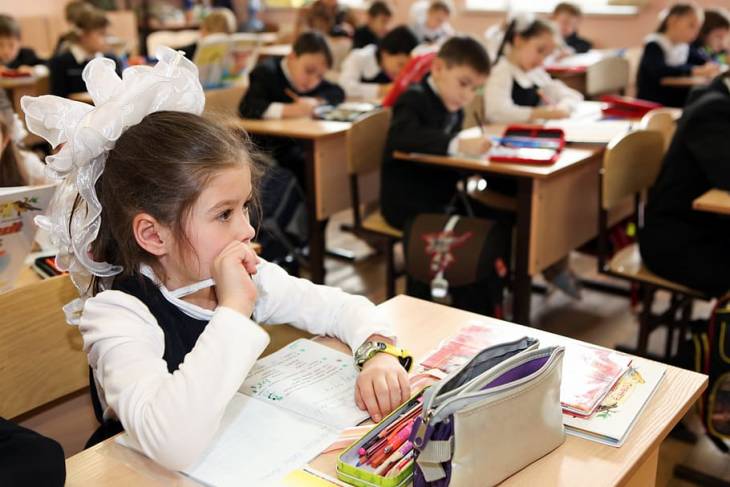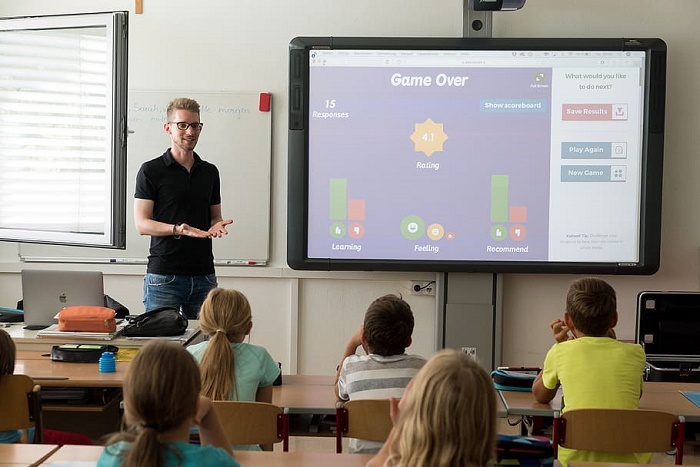6 Ways to Enhance Schools & Education in the Digital Era

People have often complained that education systems around the world are outdated for the longest time. Most of the education offered hitherto had been reserved for physical classes with little room for digitalization.
Even in educational and learning institutions that offered distance learning, only specific courses and lessons were available.
But, in 2020, a lot changed. Due to the pandemic, there has been a tremendous shift to online learning. The move may have been quick and massive, but it has opened many opportunities.
Education in the Digital Era
For most educational institutions, the idea of physical learning only is fading away and may become obsolete. Teachers are delivering examinations and assessing progress online. They are adapting to the latest technologies to support traditional educational methods and systems.
The use of digital solutions for schools, educational applications, platforms and resources are also gaining popularity. All these digital solutions allow for better communication, organization, and administration of school activities.
As the world adapts to digitalization, there are different ways we can all work together to enhance school education and take learning to the next level in our digital world:
1. Embrace Artificial Intelligence (AI)
"Our intelligence is what makes us human, and AI is an extension of that quality.” – Yann LeCun Professor, New York University
AI plays five crucial roles in education;
- Personalize the learning process.
- Include people with different abilities.
- Automate task assignment.
- Offer personal tutoring outside of classroom time.
- Create smart content.
In each of these roles, AI helps students acquire new skills effectively. It also individualizes tasks to improve engagement. By using its refined algorithms, AI delivers accurate results.
More importantly, AI allows lessons to take place anywhere. This way, tutors and students are not restricted to tight school hours.
AI-powered assistants are also excellent at explaining complex topics. And thanks to the ability to save lessons, students can repeat challenging issues.
Artificial intelligence improves individual understanding of topics. It also enhances students' interest in studies.
2. Let the Teachers Lead

Even with all the technology flowing around, teachers still need to lead. They need to supervise, assess, and grade students.
When using an AI-powered system, teachers need to optimize the bots. They need to set concepts that fit current educational standards.
Because of this, the next level of education needs teachers at the front. Teachers must decide on the curriculum, technology, and culture that fits an institution. Doing this ensures that there is an education process that everyone follows.
Also, having the teachers on the lead ensures there’s an update of classroom content. This ensures current learners are fit for the job market.
3. Use Video for Learning Courses
Videos are relevant for improving engagements. They increase students' interest in complex topics. The use of videos has also demonstrated high performance in learning.
Videos serve several purposes in the education system, including:
I. Enhance Digital Competency
Technological advancements are fast taking shape in the world. Because of this, a person's ability to communicate and solve problems using digital technologies is vital.
For educators, the use of videos prepares students for digitalized workplaces. It also enhances other competencies like language, maths, or science through digital tools.
Also, videos promote critical thinking. It supports information management skills using electronic media. The use of video enhances written text lessons required when using ICT.
II. Engage Students Sensory Experience
By embracing video content, learners can see and hear the various concepts being taught. They can visualize an event and enhance their understanding of a topic. Contextualizing ideas boost critical thinking. It engages the senses to think and react in specific ways.
III. Save Data
With access to the internet, students can watch from various devices. These devices come with storage options, like the Cloud, that save data. For current and future participants, this is a load of reference material. Saved data also offers opportunities for curriculum improvement.
4. Leverage Virtual Reality (VR)
VR uses interactive content to give viewers an immersive experience of things. It creates a virtual world that makes the brain believe it is real. This can be used to help learners experience far-off destinations and scenarios in a more immersive way than pictures and videos.
There are many other ways schools can use VR to take education to the next level, including:
I. Rich Content Creation
History and science are some of the courses that primarily use VR today. However, this technology can be adapted to other subjects for endless virtual possibilities.
II. Special Education
Students with physical disabilities have been disadvantaged for quite some time. But VR can act as a boon for these learners as well.
Virtual reality will help them explore the world through their headset in the comfort of their homes. Also, it can give them a memorable sensory experience in their education journey.
III. Field Trips
With the ongoing pandemic, it’s become difficult to travel for educational purposes. But with VR, students can visit places that are distant or inaccessible virtually.
Such classes improve students' learning experience and also create memorable experiences necessary for classroom content understanding and retention.
5. Personalize Lesson Plans
Every student is different and has unique abilities. Students learn in different ways and paces. Because of this, students need and do better with individual, personalized attention during classes.
Personalization allows for customization of the training approach and learning experience. It’s based on tailoring content to individual needs.
With personalization, students have a say in their learning, which enhances the learning process. They can pick their preferred mode of education that suits them best.
For example, students can choose between listening or watching an educational clip. The ability to choose gives them the motivation to complete the course and do more.
Personalization also allows learners to attain the level of understanding required in a convenient way. It also gives tutors the time to plan their schedules properly and appropriately.
Additionally, students have room to break complex concepts into more manageable sections or lessons for them. This reduces the stigma on students struggling with a topic.
6. Give Result-Oriented Assessments
Like traditional diplomas and other professional courses, online education also use assessment tests. The tests gauge the knowledge of the students based on specific questions.
Usually, this doesn’t always accurately gauge a students’ understanding and capabilities, because there may be various topics they are good at that aren’t in the exam.
To measure a learner's actual knowledge, education and lessons should include result-oriented assessments—have areas of problem-solving, critical thinking, and innovation. This way, educators can more accurately highlight a student's knowledge based on their strengths and interests.
In Conclusion
To improve school’s efficiency, operational, administrative, and communication systems should be merged. It would also help if the latest technologies that boost performance are adapted.
That means that we require AI, personalization, videos, virtual reality, and more incorporated in our training institutions to take education and learning to the next level.




















